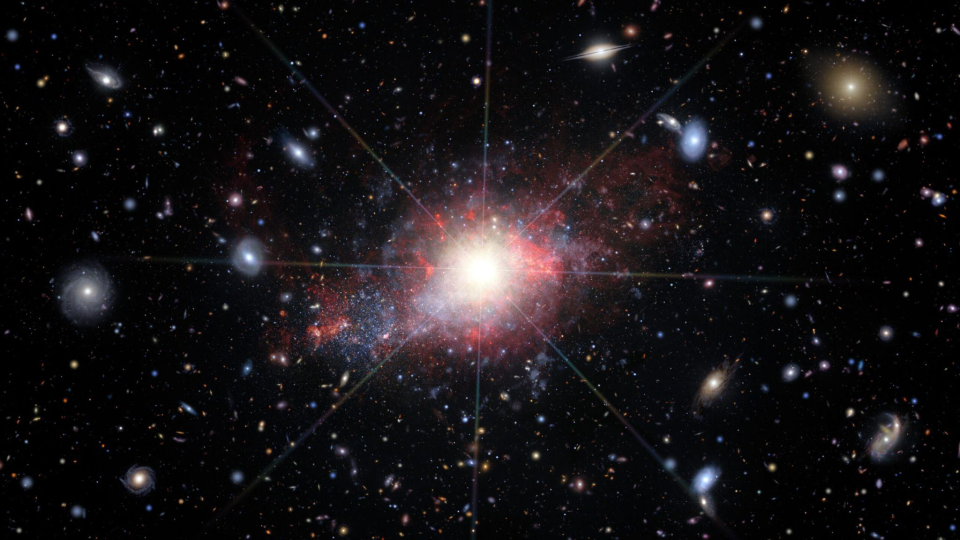
Back when I started astronomy in the 1990s, folks joked that a sample of 6 was big enough to do statistics. In those early days of digital cameras and multi-meter telescopes, it still took a night or more to observe a single galaxy.
I bring this up because a recent press release casually failed to mention that a new publication using the Dark Energy Survey Instrument started with a sample of 1,385,177 galaxy spectra… and this is just galaxies from their Early Data Release. There are more galaxy spectra coming thanks to their ability to observe up to 5000 galaxies at a time.
Statistics in astronomy are a whole lot more interesting today.
From this sample, a team of researchers went digging for information about the blackholes in the centers of regular and dwarf galaxies. After restricting themselves only to galaxies that met specific criteria, they had a sample of 410,757 line-emitting galaxies, including 114,496 dwarf galaxies.
Until 2014, researchers weren’t even sure if dwarf galaxies had massive black holes in their centers. Not only did researchers find black holes in dwarf galaxies, but they also found active galactic nuclei in 2% of the dwarf galaxies!
And the black holes they were finding in galaxy cores ranged from supermassive black holes with masses over a million solar masses down to intermediate-mass black holes as small as 25 thousand solar masses.
These smaller black holes are the most interesting to a lot of us. Altogether, they found nearly 300 intermediate-mass black hole candidates, and in a single paper of preliminary data, they have doubled the number of possible intermediate-mass black holes found in surveys.
And to repeat myself – these are results from the early data release. There will be more data coming for several years and this sample is only going to go up and up over time.
Ultimately, this will allow us to better understand both the relationship between a galaxy’s size and its central black hole’s size, as well as the formation history of super massive black holes, which seem to grow both through the merger of stellar mass black holes as well as through the collapse of material directly into black holes in the early universe.
I can’t wait to see where this research goes.
